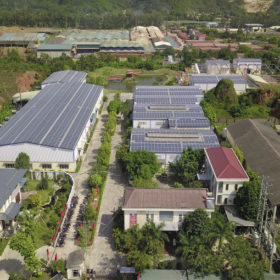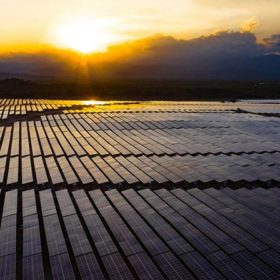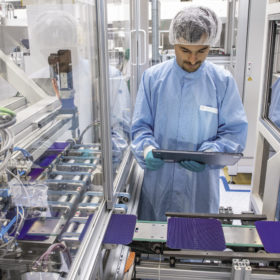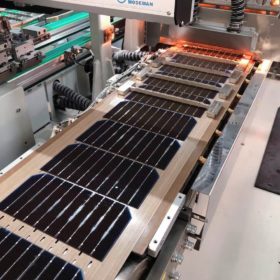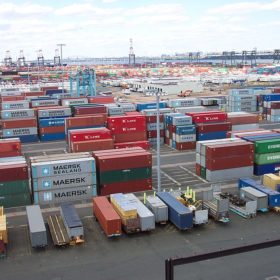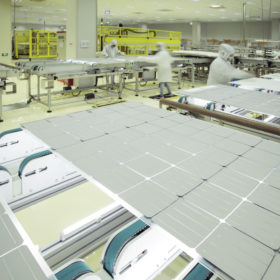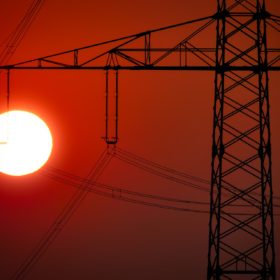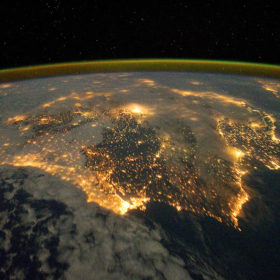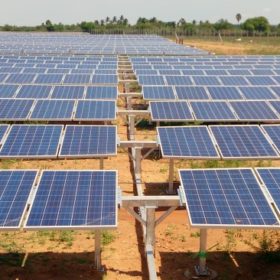Why has the M&A landscape struggled to take off for renewables in Vietnam?
The Vietnamese renewables industry has been flourishing lately. Taking the example of the solar sector, the installed capacity increased from barely 134 MW in 2018 up to 6,000 MW in 2020. Vietnam has definitely emerged as one of the most active countries in South-East Asia and with the merit of diversifying its energy mix. They added capacity not only in solar – utility scale, commercial & industrial (C&I) rooftop – but also onshore/nearshore wind, hydro and to some extent biomass energy projects. Vietnam has shown levels of dynamism which has attracted initial investor interest.
New GIZ guidelines to help drive Vietnam’s C&I rooftop market
Last Friday, the German development agency Deutsche Gesellschaft für Internationale Zusammenarbeit (GIZ) officially released its “RTS – Technical and Administrative Guidelines for Commercial and Industrial Projects” to further support the development of rooftop solar (RTS) in Vietnam. Earlier in the week in a JinkoSolar-organized webinar, Tuan A. Nguyen of the Ministry of Industry and Trade’s (MOIT) Institute of Energy provided an update on Vietnam’s growing PV market and especially the RTS segment. Mr. Tuan also coauthored the RTS Guidelines for C&I Projects.
Vietnam opens 450 MW solar plant
Ho Chi Minh City-based construction company Trungnam Group said its army of laborers took just 45 days to perform site clearance for a project which took shape within 102 days.
IRENA presents $2tn plan to drive 5.5m renewables jobs by 2023
Doubling down on renewable energy investment and energy transition spending is required to ensure a truly green global recovery from the Covid-19 crisis and its economic aftershock, claims the International Renewable Energy Agency.
Half-cut, bifacial, 20.5%-efficient PERC modules from Vietnam
Chinese solar manufacturer Dehui is planning mass production of 12-busbar bifacial panels based on 182mm wafers from next year.
India confirms one-year extension of solar cell import duty
The ‘safeguard’ duty will be levied on Chinese, Vietnamese and Thai solar cells – whether assembled into modules or not – at 14.9% from today and falling to 14.5% in six months’ time. Malaysian products are exempted as their imports have fallen dramatically since the duty was introduced, in July 2018.
Chinese PV Industry Brief: Longi to grow by 10 GW, China opens world’s largest floating PV project
Plus, equipment manufacturer Shangji Automation is set to enter the silicon ingot making game with plans for an 8 GW fab, while state-owned developer Panda Green says it plans to add 500 MW of annual project capacity over the next three years.
Global solar capacity may reach 1,448 GW in 2024
SolarPower Europe has predicted the volume of new PV capacity added this year will be 4% less than last year’s figure because of the Covid-19 crisis. At the end of 2019, the world had topped 630 GW of solar. For 2020, around 112 GW of new PV capacity is expected, and in 2021, newly installed capacity could be 149.9 GW if governments support renewables in their coronavirus economic recovery plans.
Covid-19 weekly briefing: Merchant solar developers could seek shelter in return to subsidies and PPAs are being revisited, but at least the Irish are coping with lockdown measures
The unfolding effects of the Covid-19 crisis, and fears of a possible second wave, have split analysts trying to guess how the unsubsidized renewables market will emerge as slumping demand continued to distort power markets. pv magazine rounds up the week’s coronavirus developments.
Covid-19 pandemic puts 150 GW of PV, wind at risk in Asia
Up to 150 GW of PV and wind projects could be postponed or canceled throughout the Asia-Pacific region by 2024 if the coronavirus-triggered recession continues beyond the current year, according to new research by Wood Mackenzie.

